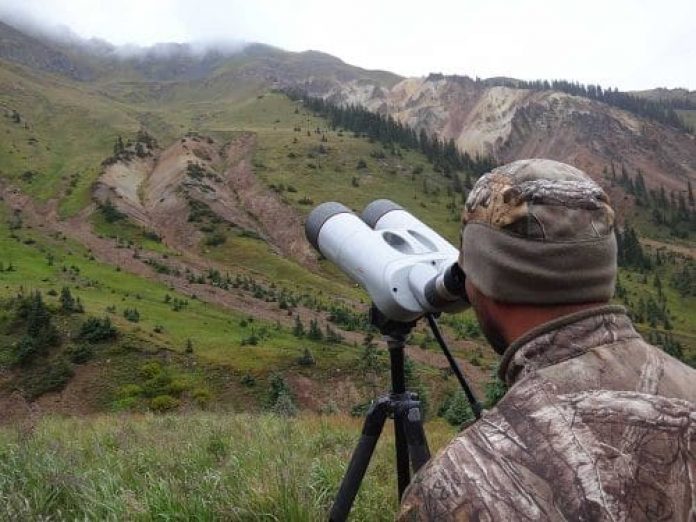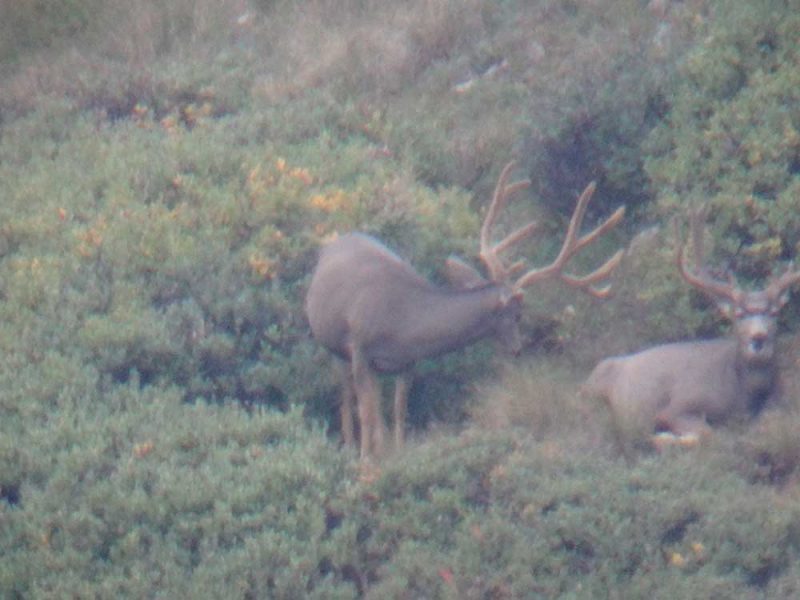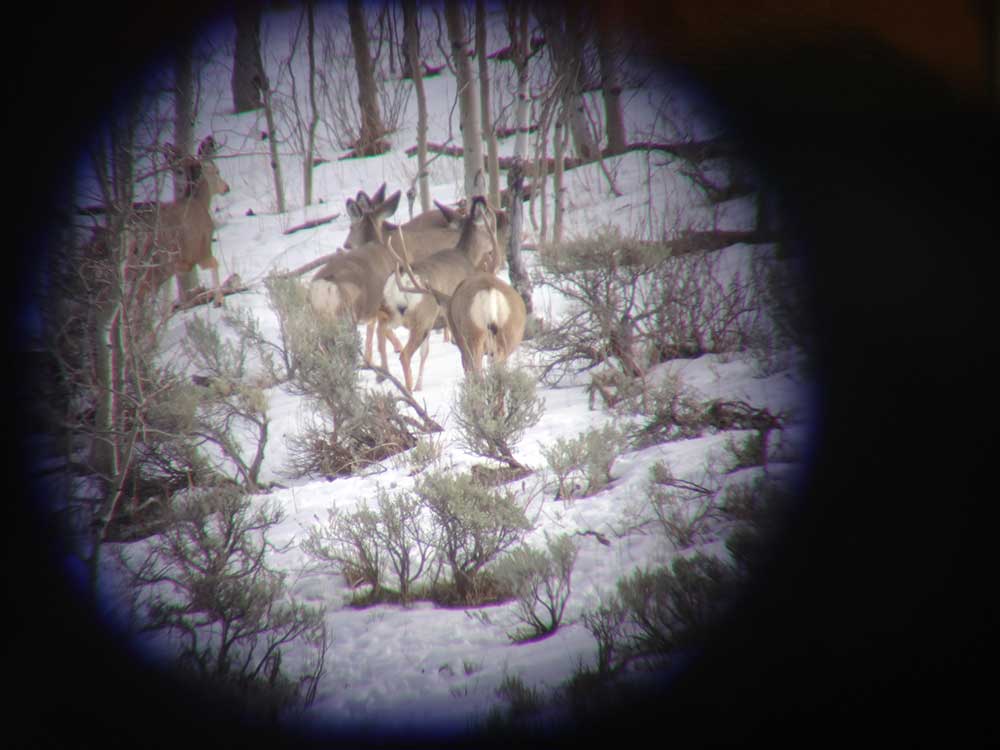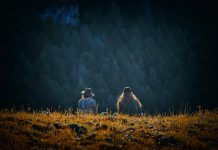
There are tactical advantages to everything we do, otherwise known as our strategy. Strategy sets the tone for overall success, whether it is going to school to get a degree, procuring employment, or hustling your way into a VP of Sales position for a fortune 500 company. Success hinges on formulating a plan. Similarly in hunting, implementing a strategy when glassing game is the key to unlocking big-time success afield. Let’s go through the elementary basics of strategic glassing. Use these tips and you’ll be spotting more deer more frequently and faster than anyone you know.
I learned the principle of spotting quickly, because my hunting buddy employed a tactic of sink or swim. His theory was that whoever spots it, stalks it. I sat around giving him signals most of the time and it sucked, badly. However, in many ways I’m glad it worked out that way. I became so obsessive, competitive, driven, and hungry to spot the deer first that it became my last dying wish! I worked at it until I started hunting with new friends and always took pride in earning the animals I stalked by spotting them myself first. This was a tough but rewarding course, because I now enjoy the results of glassing big, open country and knowing how to effectively pick it apart.
Let’s talk glassing set-ups and reasons for the set-up you should run. First, make certain you buy the best product you (whatever that may be). Do not be hasty and buy low-grade equipment – It will yield low-grade results in the long run. Field glass should always consist of 10X42’s around your neck paired with a 20-60X65mm spotter. If you want to up the ante on your glassing, consider collecting quality glass as the format for your long-term field success. For example, I saved for 10X42 EL Swarovski’s first, then saved for a similar spotter. Later I added the 15X56 SLC Swarovski’s and then purchased the KOWA Highlander Fluorite’s 32X83 mm Big Eye’s. It took me about 5 years to save the money for all of this equipment but I now have everything I need to cover any terrain I want to hunt. A 10X42 field glass and a spotter are so important because you must have a base to build on. They will give you a proper foundation to build from. The more seriously you INVEST in your glass the more serious you are about long-term result. This is not to say you have to spend top dollar on all equipment, however you have to find a balance and sometimes push the envelope when considering what is acceptable. High-grade glass will result in more opportunity in the field, there’s no doubt about it.
When you find yourself behind your glass, the mountain can be approached from many different angles. It is best to approach it with the rule of thirds in mind. Always create an imaginary grid breaking the mountain apart into 9 sections – top, middle and bottom – left, middle and right. Once you have the terrain grid in your mind, scan the sweet spots first. Areas that you know have a tendency to hold animals. Once you do a quick scan, going left to right, top to bottom, or bottom to top, slow down if you have not seen anything.
I cannot tell you how many times I have done quick scans and picked up animals right off the bat! Early morning gray light provides these opportunities since game is still out feeding before bedding down for the day. Once the sun is higher in the sky, you’ll notice that the quick scan is more like a get lucky scan. You’ll have to dig in a seat and get comfortable to tear the mountain apart for a while.
Remember to be patient. If you know the animals are there don’t act hastily. In order to successfully hunt you have to hunt on the quarry’s time, not on your time. The animals don’t care that you’re there, or that your wife wants you home for dinner. So slow down and allow the animals to get up and switch beds. Be there long enough to catch that small move. It has helped me hunt a lot of bucks over the years, so keep it at the top of your mind while you mentally endure any hunt.
Often, the tough hunts are the hardest to do this on. It’s easy to cover huge amounts of country trying to turn up an animal. Remember, “don’t leave animals to find animals” and “don’t continue to hunt country simply out of habit.” If you know an area is solid and you are seeing game, it is simply a matter of time before you find what you are after. It is all a matter of staying the course.
Equally important as your glass is the tripod you pair it with. Something like an Outdoorsmans Tall Tripod with a pan adapter and pistol grip is a sweet set-up. You can’t go wrong with it. When you need to be mobile, I advise getting yourself set up with an Outdoorsmans Small and then you can interchange the other components at will. As a general rule, carbon fiber tripods will give you a better weight ratio for the most part, however they will suffer whenever wind is in the equation.
Case in point, this past winter I was helping my buddy Chad on his father’s hunt. He had a SLIK carbon tripod while I carried my Outdoorsmans Tall. We had around 12-15 mph winds and I was having no issues with my 15’s, but when I looked through his glass the carbon tripod simply could not cancel out the vibration in its legs. This is one area where lighter isn’t always better, so do some research before you pull the trigger.
Also, a smooth pan-head or pistol grip is essential so you don’t lose your place on the mountain in your glass. Cheap pan-heads will act “sticky” and will not pan smoothly. As you can see, the glassing set-up is more of a system in which all components are necessary to have a great experience behind your glass. Once you work with a solid set-up, you’ll never want to use anything less.
Good optics are a pleasure to work with and make any hunt better. Everything we do as hunters in our quest for new gear is essentially to incrementally improve our odds and make the hunt more enjoyable. The obvious reason to purchase pricey optics is largely due to their high performance in lower light conditions. However, other traits such as edge-to-edge flatness create less eye fatigue. Excellent glass will leave your eyes in much better condition after a long hunt. Also, technological advancements in lens coatings, whether it is UV, Scratch resistance, anti fog, anti-reflective or otherwise, are all small advancements that help in the field.
If you take the opportunity to save and purchase excellent glass, the results will pay dividends. This glass will most certainly add, at a minimum, 30 minutes per day of optimum glassing time, (15 minutes on each end of the day) leading to more game spotted. Take that same half hour over a 10-day hunt and you just picked up 5 hours of the best glassing time. Add this up over the days in each year you spend afield and you get the idea. This is no joke. The seriousness of this simple key to your success cannot be stressed enough. This will lead to more trophies on your wall.
Many people sit back and shrug it off as not being a big deal. However, any athlete will utilize the best equipment he has access to. You don’t wear topsiders to play basketball do you? Then do the best you can to find quality optics.
Case in point: I distinctly remember a hunt some year’s back where I had just purchased my 10X42 EL Swarovskis. We were in Southern Arizona and I was attempting to help a buddy of mine find a Coues buck. I vividly remember setting up a nice spot to glass from before sunrise. As I looked through my new glass, I was stoked at how much better they were than my old Nikon Monarchs. It wasn’t a minute later when my buddy started shouting out “I’ve got one.” Then a few seconds later “I’ve got two more.” This went on for five minutes as I frantically searched in the early morning gray but found nothing. This was my introduction to 15X56’s on a tripod. I turned to him and asked where he was looking. As I sat in his spot and peered through those tripod mounted 15’s I felt like I experienced an outer body sensation and had my “AHA” moment! It was then I knew I needed to save up for 15’s.
Fast forward to today. I now carry around a heavy set of 32X83 mm Fluorite coated KOWAS’s. (Yes, because they are that worth it.) Although I don’t carry them far from the truck. Even with this set-up I am trying to justify buying two 95mm Swaro spotters to clamp together to even further improve my glassing edge. Yes, it is an obsession. It started years ago when I knew nothing about optics and has led to something that is far greater. I want to again stress the point that you need to give yourself the appropriate tools for the job. There is no substitute for making success, and that comes by being prepared in every way possible. These basic tips help clarify why I chose to go the direction I did when searching for new glass; this is an investment into my long-term hunting future. Hopefully, what I have shared will help you gain some useful insights to gain the upper edge on your next hunt.

















